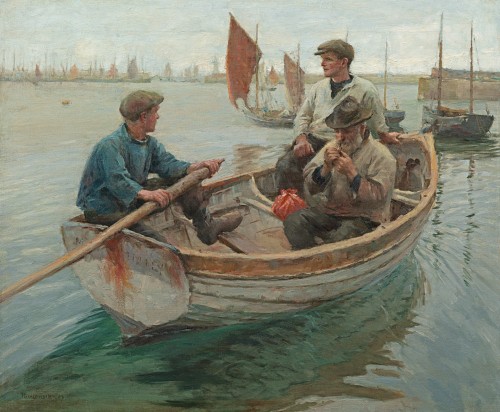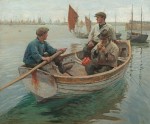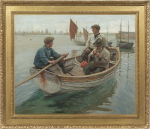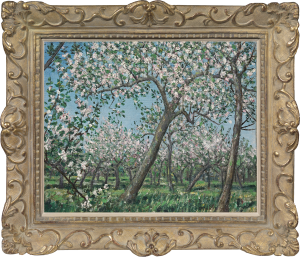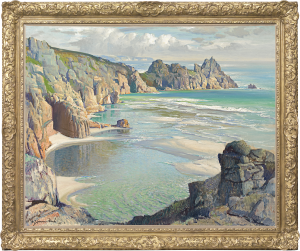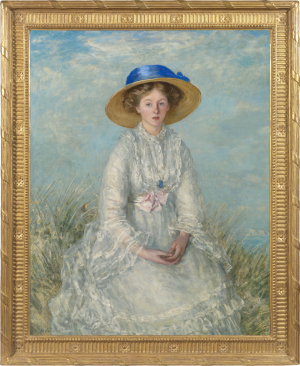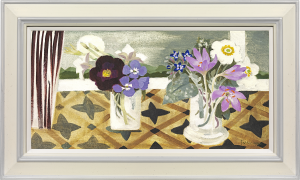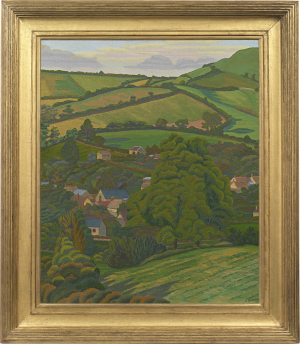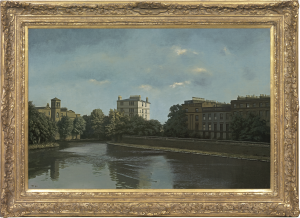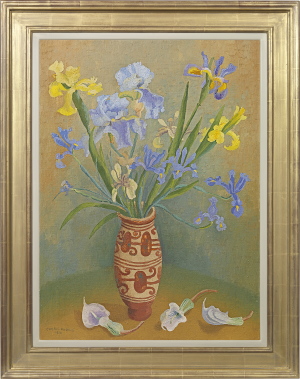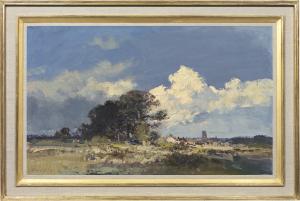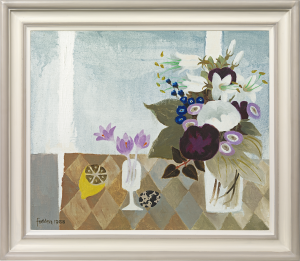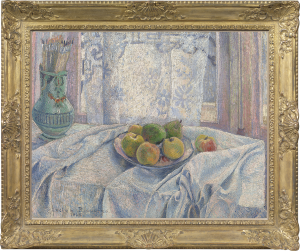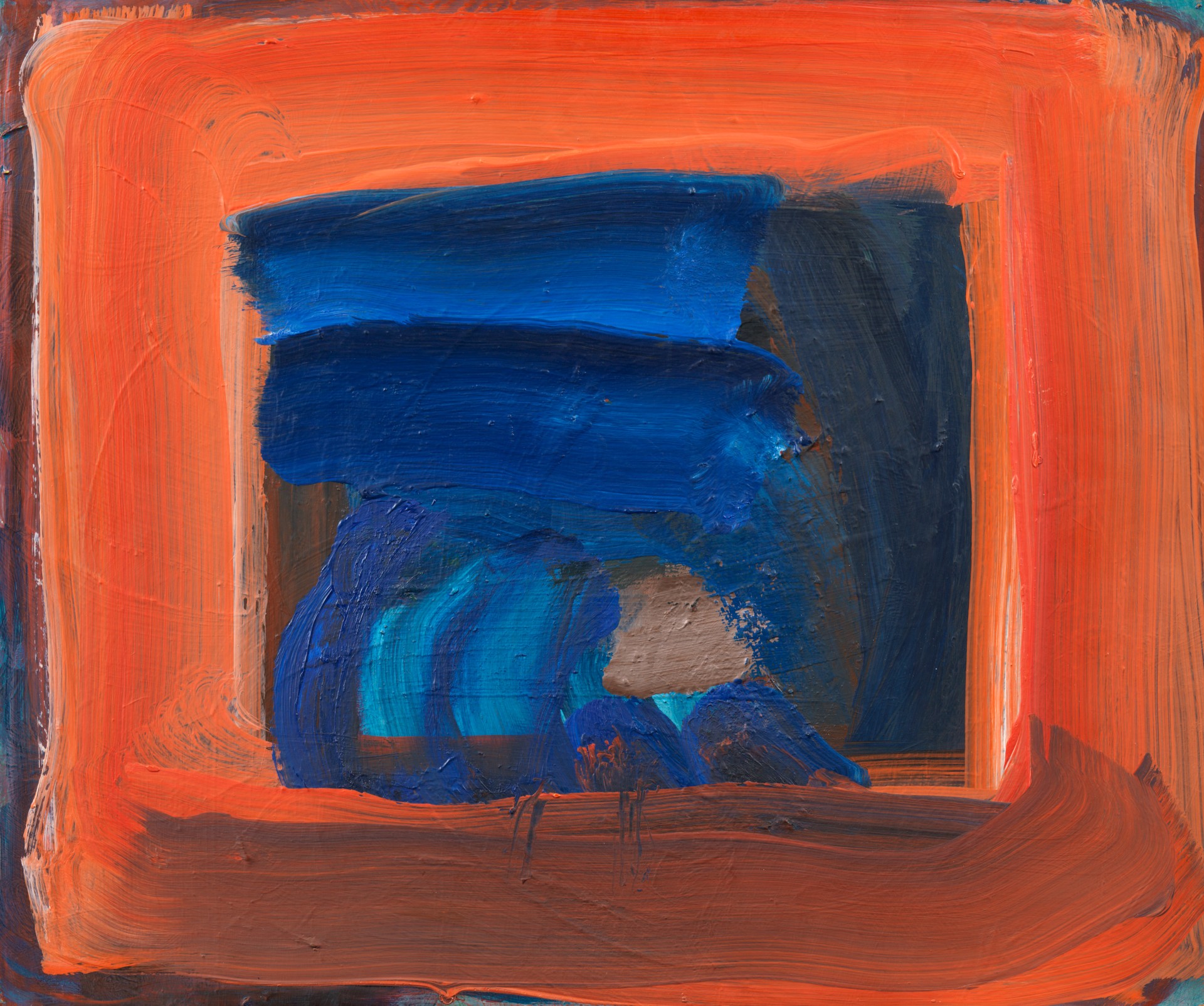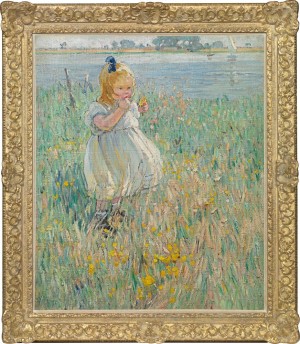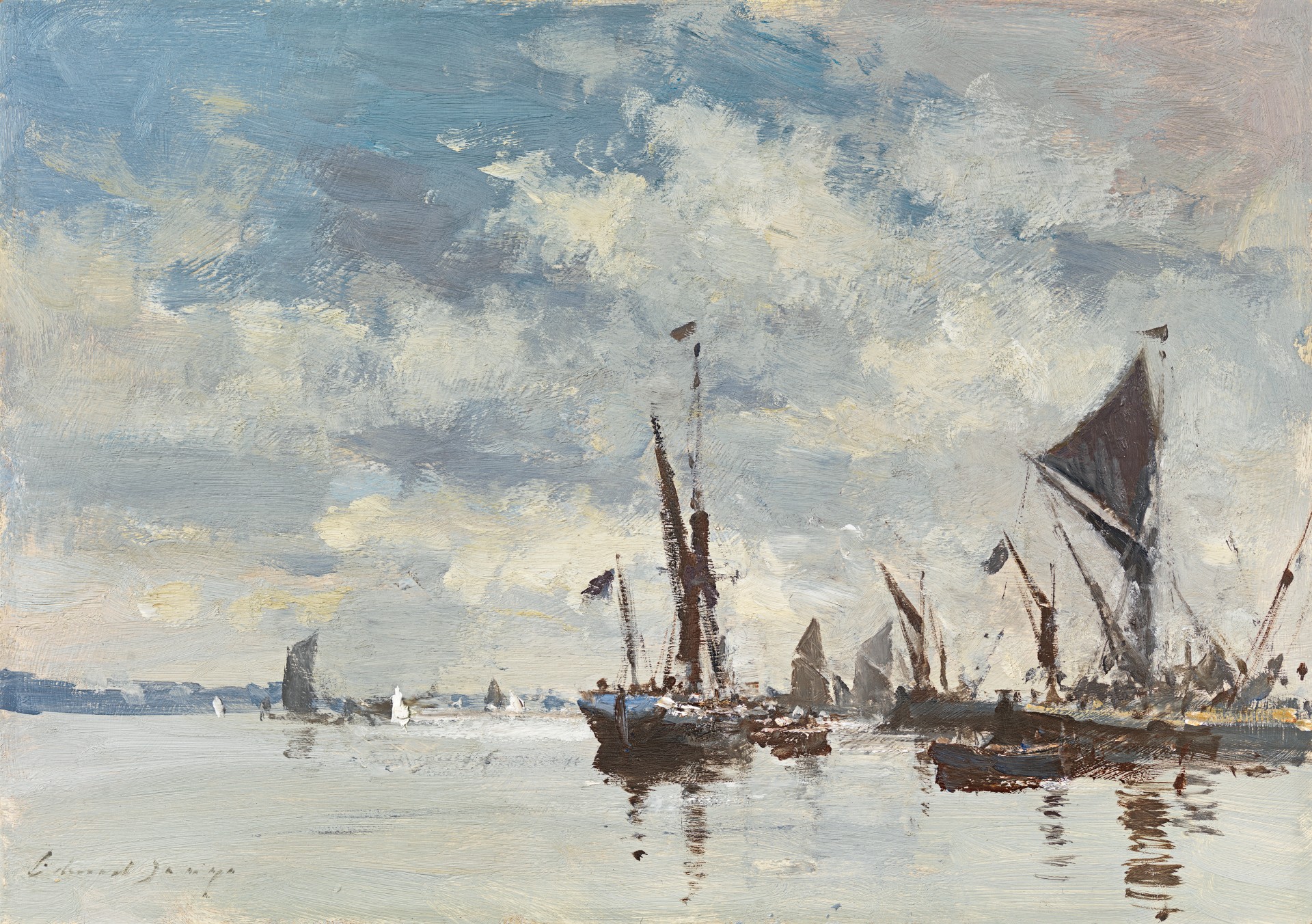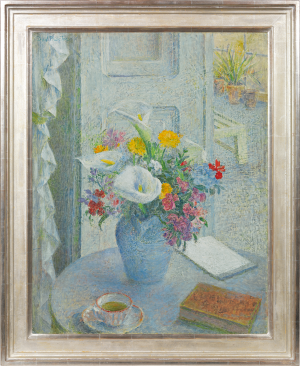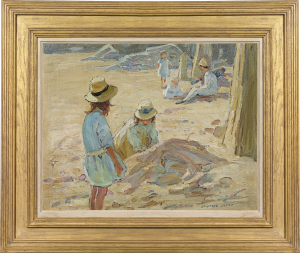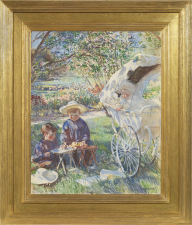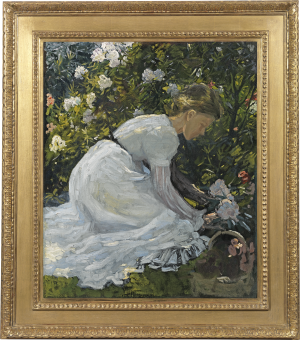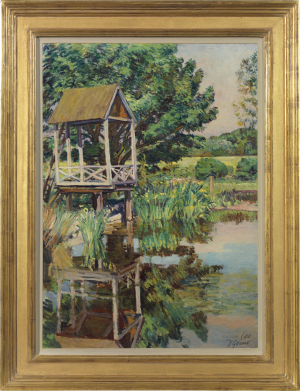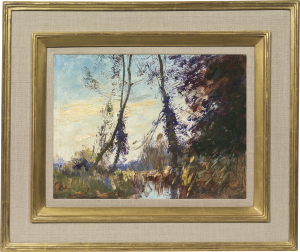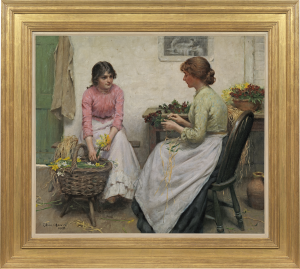Harold Harvey
Whiffing, Newlyn
Oil on canvas: 25 x 30 (in) / 63.5 x 76.2 (cm)
Signed and dated lower left: Harold Harvey. 07.
This artwork is for sale.
Please contact us on: +44 (0)20 7493 3939.
Email us
HAROLD HARVEY
Penzance 1874 - 1941 Newlyn
Ref: CC 103
Whiffing, Newlyn
Signed and dated lower left: Harold Harvey. 07.
Oil on canvas: 25 x 30 in / 63.5 x 76.2 cm
Frame size: 31 x 36 in / 78.7 x 91.4 cm
Provenance:
Edward S Stearns, Paintings & Art Collections at Gimbel Brothers, New York
Hammer Galleries, New York [MN189], as On the Thames;
Mr & Mrs K Stoll, Forest Hills, Long Island, acquired from the above as a gift for Mr Stoll’s brother, Harry Stoll, then by descent
Exhibited:
Possibly Newlyn, Passmore Edwards Gallery, Pictures by the Artists of Newlyn intended for the Royal Academy and other London exhibitions, 22nd March-April 1907
Literature
Possibly ‘Cornish Pictures. Newlyn’s Contribution,’ The West Briton and Cornwall Advertiser, 4th April 1907, p.7[1]
Kenneth McConkey, Peter Risdon, Pauline Sheppard, Harold Harvey: Painter of Cornwall, Sansom & Company, Bristol in association with Penlee House Gallery & Museum, Penzance, revised edition 2024, no.104, p.121, illus. in colour p.35
The theme of men or boys in a small boat, typically a dinghy, and set in a harbour scene, is one that Harvey treated several times in the years 1904 to 1914, when the First World War brought such views to an end. The number of examples of this subject shows Harvey’s enduring enjoyment of depicting it, and he always found some new element to distinguish each painting from the others. For example, in the present work, there are three splashes of red depicting rust on the stern, a cloth bundle on a bench, and a sail on another boat.
This painting, at 25 x 30 inches, is a larger version of a very similar scene entitled Whiffing and painted the previous year in 1906, but smaller at 12 x 16 inches, and so we might surmise that the earlier version was so well thought of that Harvey decided, or was commissioned, to paint a larger version.
The term ‘whiffing’ refers to fishing with a short line, perhaps to catch a fish for supper, and was not a commercial activity. Sometimes the term is mis-spelt as ‘whiffling.’ After the war ended in 1918, Harvey did not return to this type of scene but developed his preference for interiors, portraits and imaginative treatments of landscape.
During its time in the USA the painting acquired the title On the Thames, but the scene is clearly that of Newlyn harbour with its jetties and lighthouse.
Peter Risdon, 17th March 2024
HAROLD HARVEY
Penzance 1874 - 1941 Newlyn
A descendant of considerable Cornish lineage, Harold Harvey was one of the few Newlyn artists to spend his entire life in Cornwall, apart from one brief period abroad. Described in The Studio, 1924, as one of the 'truest and sincerest of British Painters,' his works were considered 'genuine interpretations of place and people', and praised for their success in conveying 'the peculiar and rather wistful geniality of this corner of England'.
He first studied under Norman Garstin, and then went to Paris during the 1890s, where he continued his studies at the Academie Julian under Benjamin Constant and Jean-Paul Laurens. On his return, he married Gertrude, who was also an artist, and they settled in Newlyn.
A prolific painter of varied subjects and styles, Harvey never achieved his due critical acclaim. He was a regular exhibitor at the Royal Academy from 1898-1941 and held several one-man exhibitions in London, at the Mendoza Galleries, Barbizon House and the Leicester Galleries.
Harvey's artistic development reveals an ability to assimilate the changing Newlyn styles. The muted palette of his first works denote an appreciation of the early generation, especially Alexander Stanhope Forbes. He then adopted more brilliant colours, comparable to the contemporary works produced by Laura Knight. From circa 1915, he painted in an increasingly flat, decorative style and broadened the range of his subjects which now included sophisticated interior scenes. By the 1920s his figures both in style and scale display the influence of Dod Procter.
Essentially a realist painter of local life, Harvey's works reflect above all a deeply felt commitment to his beloved Cornish home.
[1] ‘Mr Harold Harvey, who paints in a most attractive style, was unable to hang his chief picture, through its incompletion. There were, however, one or two capital pieces of work from his brush, one of the most prominent being a Newlyn harbour scene with a small boat in the foreground, occupied by three fishers. It is true to life, and vigorously painted.’

